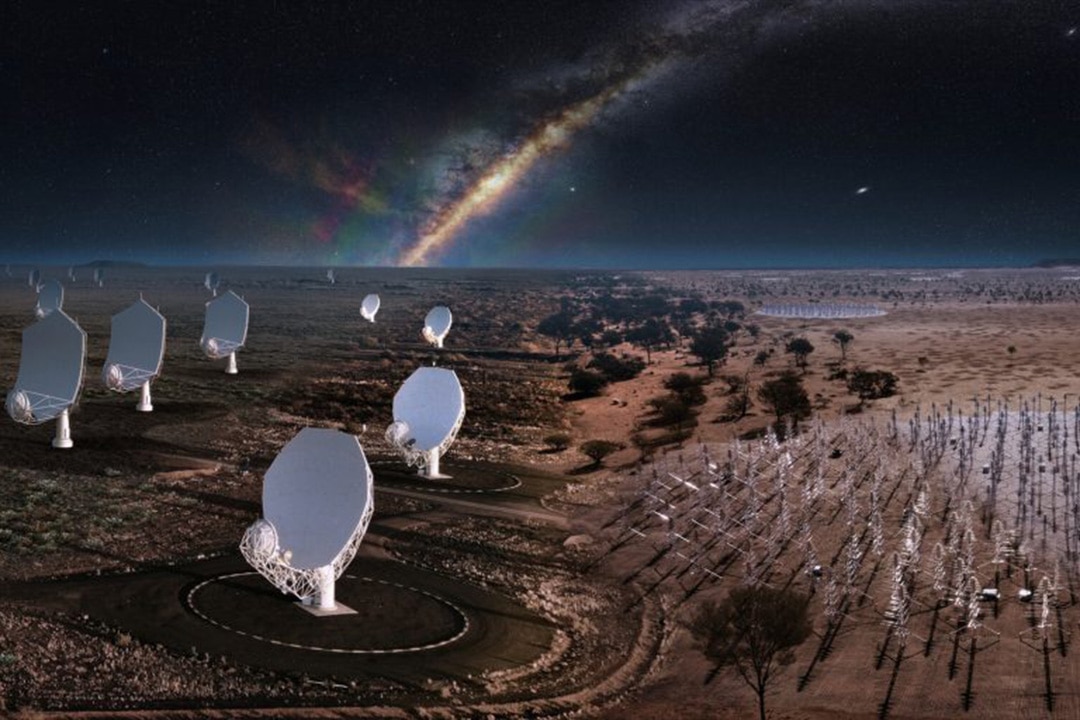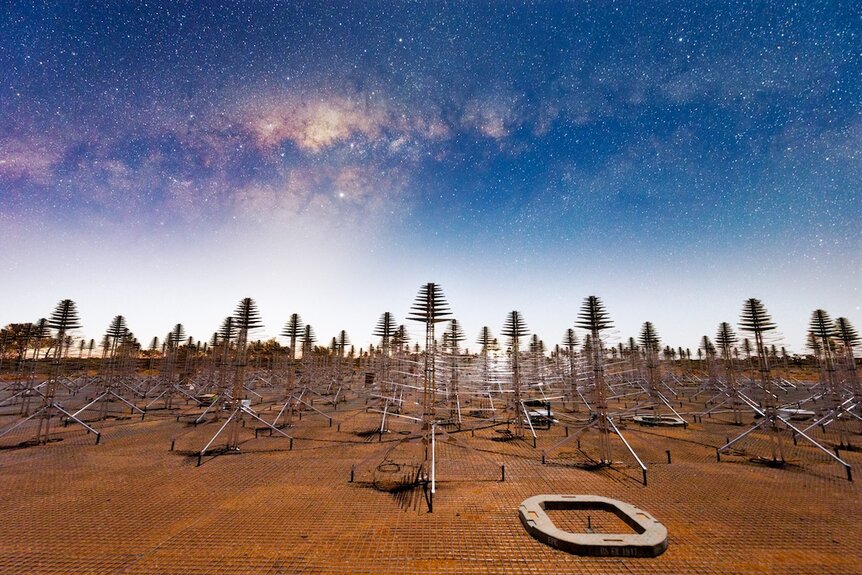Create a free profile to get unlimited access to exclusive videos, sweepstakes, and more!
Construction begins on Square Kilometer Array, world’s largest radio telescope
It's a telescope roughly half the size of the planet.

SYFY’s own Resident Alien (streaming now on Peacock!) tells the story of Harry Vanderspeigle, or rather, the extraterrestrial who has taken over Harry’s identity. See, Harry was sent to Earth to wipe out our species but instead spends most of his time grappling with the conflict between his assigned mission and his growing love of humans.
Despite our failings, we’re convinced that all the cool alien species out there would really like us if they only gave us a chance. That’s the sort of optimism that leads to astronomy, space exploration, and the construction of truly massive telescopes.
According to a recent announcement published in Nature, the SKA Observatory — an intergovernmental organization — has officially begun construction on what will become the largest radio telescope observatory ever built. In fact, the SKA array might become just about the largest telescope it’s possible to build on Earth. More on that in a minute.
RELATED: Hubble on the Bubble: Can NASA fix the world’s most famous telescope?
The telescope was first proposed in the 1990s and, at the time, it was going to be a single very large instrument. Years of planning and negotiations kept the proverbial can continually kicked down the road, until 2012 when things changed. One instrument became two, with distinct arrays in both Australia and South Africa. The project is expected to take decades to complete, but when it’s finished it will be capable of measuring radio signals with incredible definition.
According to Danny Price from the Curtin Institute of Radio Astronomy, in a statement to Phys.org, “to put the sensitivity of the SKA into perspective, the SKA could detect a mobile phone in the pocket of an astronaut on Mars, 225 kilometers away.”
The Australian and South African arrays will both be connected to a central hub and will work together to detect a wider range of radio signals. SKA-Low, the name for the array in Australia, will detect frequencies between 50 and 350 megahertz. Meanwhile the South African array, dubbed SKA-Mid, will pick up at 350 megahertz and detect all the way up to 15.4 gigahertz. Together, both arrays will form a single "virtual dish" spanning thousands of kilometers.
The trick to SKA’s incredible sensitivity is both the distribution pattern of individual antennas as well as their total distance apart. The SKA telescope will rely on interferometry to calculate its data, it’s the same basic principle behind the instruments that detect gravitational waves. Simply put, interferometers precisely measure the time between a signal reaching multiple sensors. When it comes to gravitational waves, they’re measuring the actual stretching and squishing of spacetime in the wake of the waves. In radio telescopes, the tiny differences between the arrival of a signal at different detectors allow observers to more precisely pinpoint and measure that signal.
You can think of it as similar to the way our two eyes give us depth perception. Having two light detectors provides a more complete picture of what we see than one. The SKA telescope will eventually be hundreds of thousands of eyes — though it’s probably more accurate to think of them as ears — spread out over two continents.
The newly initiated construction is the beginning of phase one, which includes deploying four large antennas in South Africa by 2024, with nearly 200 more by the end of phase one in 2028. In Australia, 131,000 antennas are planned, each about the size and shape of a Christmas tree, all of which should be deployed by the end of the first phase. But that’s a small fraction of the complete instrument. Future phases will reinforce the initial array, with an ultimate goal of thousands of dishes in South Africa and more than a million antennas in the Australian outback.
The array will be arranged in a spiral arm pattern with dishes spreading from a central core to more outlying regions. Spirals work nicely because they offer many different angles and distances between antennas, allowing for more precise measurement.
The upshot is that the array behaves as if it were one giant dish the size of the distance between the receivers. According to the SKA Observatory team, “In doing so, the interferometry technique enables astronomers to emulate a telescope with a size equal to the maximum separation between the telescopes in the array…” That maximum separation is something like 10,000 kilometers, the distance between Australia and South Africa. It’s akin to having a radio telescope half the size of the planet. We're running up on the maximum instrument size we're capable of building, without involving distances greater than the whole of the Earth.
An approach like this also gives astronomers the flexibility to treat the array like several smaller instruments. One person might use 100,000 antennas to measure a particular cosmic object while someone else could use the remainder of the array, or another small portion of it, to investigate something else. It’s the LEGO philosophy of astronomical inquiry, utilizing modular instruments which can take various forms as the case requires.
Once completed, The SKA telescope will give scientists an impressive new tool for the study of nearby galaxies, their formation, and evolution over time. We may even intercept a call from passing aliens who want to be our friends. We can dream.



























